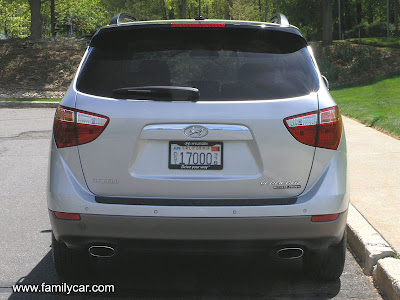 One of the most controversial and brutal topics in automotive forums and throughout the Net is Hyundai's design philosophy. It seems that in most forums we approach, the words Hyundai and copy are in the same sentence. The word 'copy' is a very strong remark and it often indicates what some Chinese automakers have done and still are doing. In one case, the Chery QQ, a subcompact car in China, was so similar to the Daewoo Matiz, that its body parts actually fit onto the latter. We've heard of cases where Chery QQ consumers often go to a Daewoo dealership to have a hood replaced. The Daewoo was introduced in 1998, while the Chery was introduced in 2003. This case is a true example of an automaker illegally infringing other automaker's products for their own line-up.
One of the most controversial and brutal topics in automotive forums and throughout the Net is Hyundai's design philosophy. It seems that in most forums we approach, the words Hyundai and copy are in the same sentence. The word 'copy' is a very strong remark and it often indicates what some Chinese automakers have done and still are doing. In one case, the Chery QQ, a subcompact car in China, was so similar to the Daewoo Matiz, that its body parts actually fit onto the latter. We've heard of cases where Chery QQ consumers often go to a Daewoo dealership to have a hood replaced. The Daewoo was introduced in 1998, while the Chery was introduced in 2003. This case is a true example of an automaker illegally infringing other automaker's products for their own line-up.We initiated this mini-investigation when we approached a comment regarding the Hyundai Genesis, stating it's a copy of the yet-to-be-released 2008 Honda Accord Sedan. We think that is a tad over the line. Prototypes of the Hyundai Genesis have been spotted since 2005, whilst the Accord was only spotted undisguised a week ago. Why is the Genesis a copy? Apparently, it's the C-pillar kink that defines the Genesis as a copy of the Accord. The Hoffmeister kink was a design cue started by BMW. Since then, it has spread to many vehicles, including the Holden VE Commodore and the Nissan Altima. So why is the Genesis the culprit here when the two previously stated vehicles were out in showrooms much before? The speed of improvement of Hyundai has made us have a second look at their cars and specifically their designs.
Now, every taillight speck that looks similar to another car, regardless of when they were shown, makes the Hyundai a culprit and we have gotten used to belittling the automaker. The Veracruz, Hyundai's latest vehicle in the line-up and the automaker's most expensive vehicle, has been negated frequently because of a similar rear-end and a "blatant" copy of the Lexus RX350 in the interior. Continue reading to see what we have resulted.

 We did not mention which one is the Lexus and Hyundai. Why? We know you can identify which ones they are right off the bat, the first indication that cites the Hyundai is not a copy of the Lexus. The rear glass shape is different. The taillights of the Veracruz are conventional and are separate from the glass, while the Lexus's is clear and its crease follows the rear glass shape. The license plate holder and the rear bumper we won't even get to because they are total different shapes.
We did not mention which one is the Lexus and Hyundai. Why? We know you can identify which ones they are right off the bat, the first indication that cites the Hyundai is not a copy of the Lexus. The rear glass shape is different. The taillights of the Veracruz are conventional and are separate from the glass, while the Lexus's is clear and its crease follows the rear glass shape. The license plate holder and the rear bumper we won't even get to because they are total different shapes.
We can complain that the Outlander's rear is similar to the Lexus. But, we won't get to it either and so hasn't the automotive enthusiasts that nitpick Hyundai's designs. We aren't implying that the Outlander is a copy, nor the Veracruz. We are just stating that Hyundai is merely influencing its designs like Mitsubishi, Toyota (Camry's Bangle bum), Nissan (Altima's Hoffmeister kink), Pontiac (G8's Hoffmeister kink), Honda (Civic Sedan's Audi-ish taillights), and more. We also aren't stating that they have 'copied' others too. In fact, they're influencing their designs from other automakers just as much as Hyundai is. And, frankly, that is not a crime nor they should be targeted with remarks defacing the automaker.
Just remember, when you take a stroll in the city, you'll always find similarities between a car and another one. It's not always a Hyundai.



